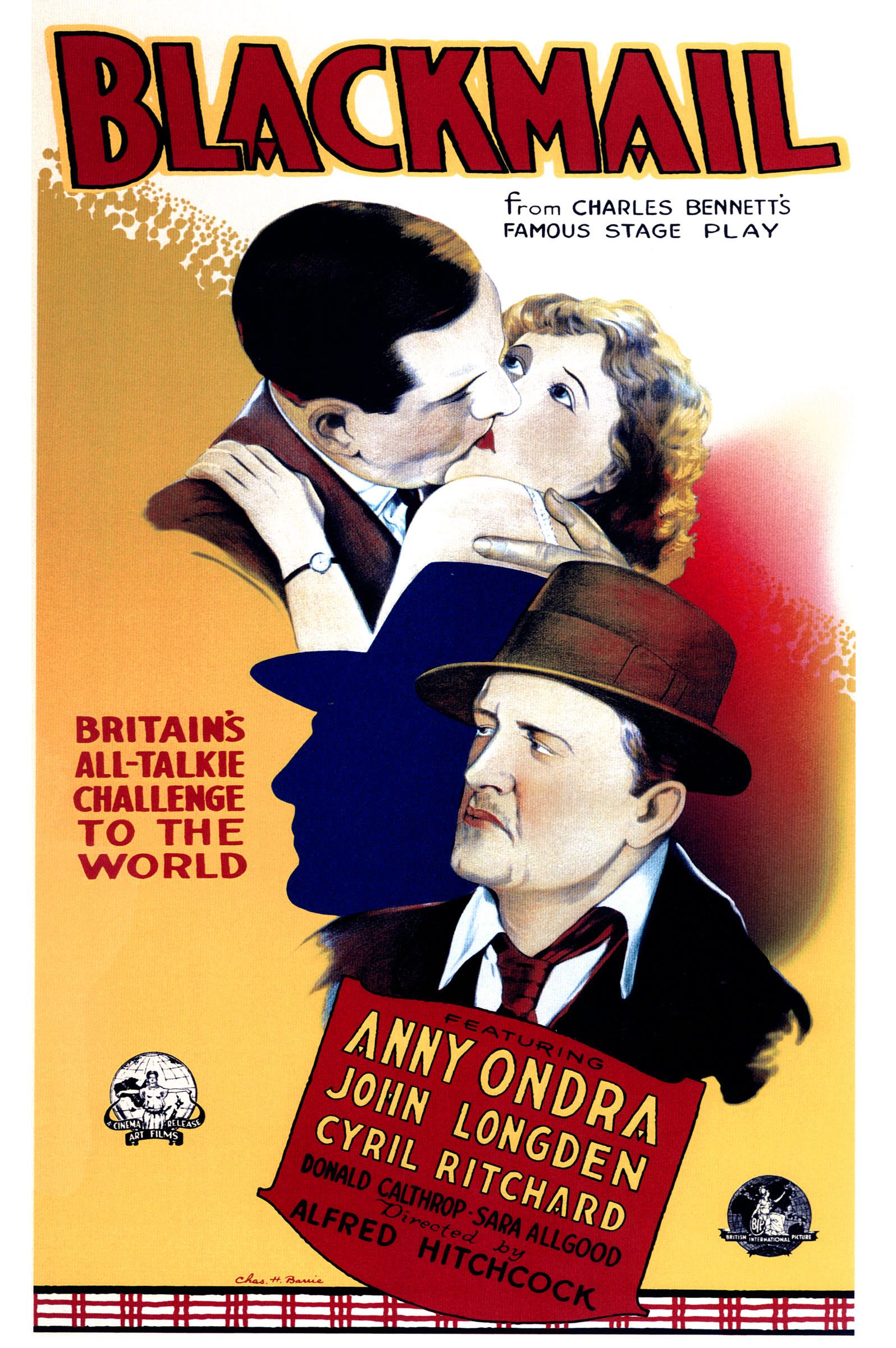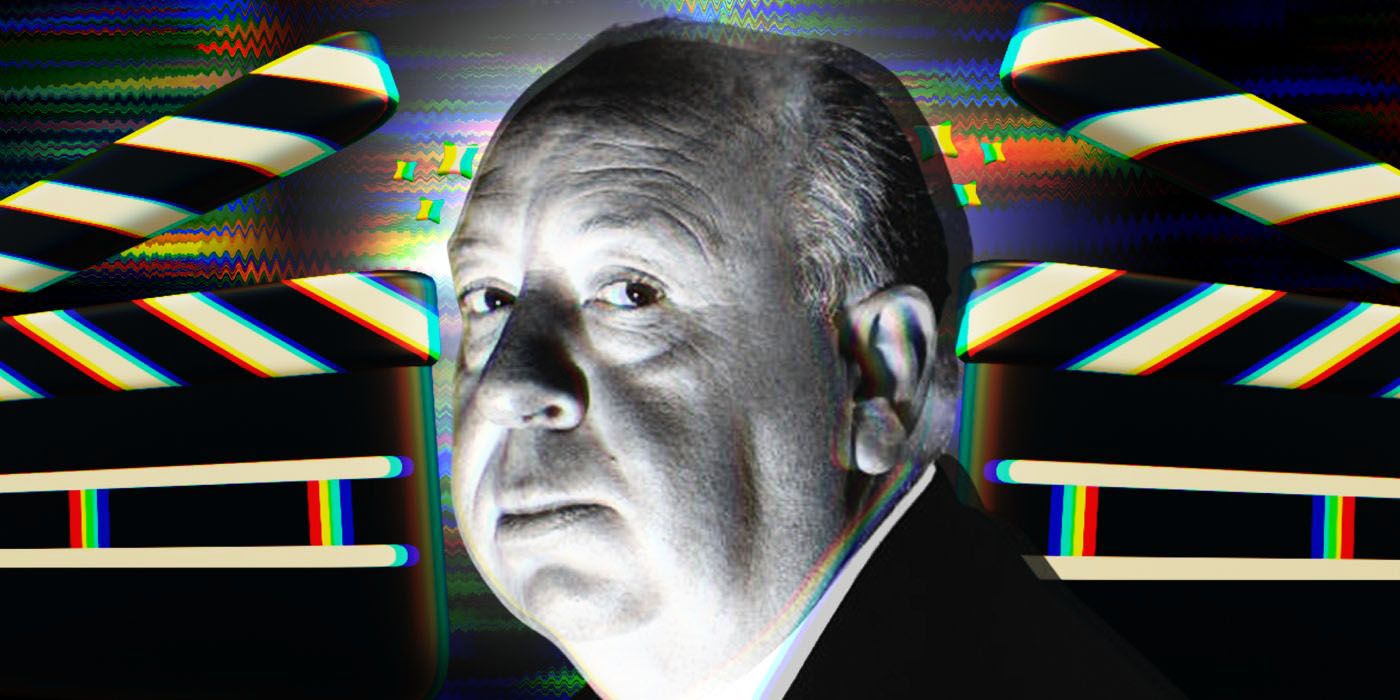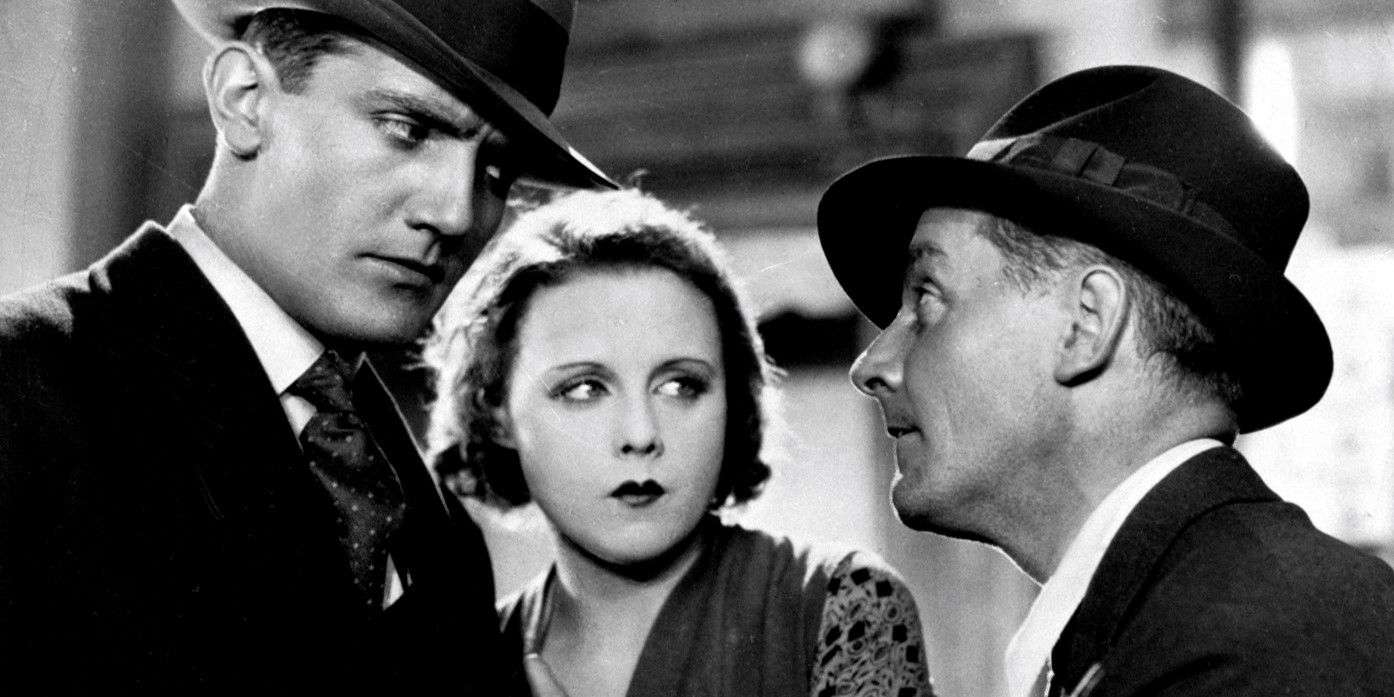The Big Picture
- Hitchcock revolutionized British cinema by embracing and innovating with sound in the film industry's transition from silent movies.
- Blackmail showcased Hitchcock's mastery of sound as a storytelling device, using it to convey complex mental states and enhance visual storytelling.
- The success of Blackmail marked the beginning of Britain's embrace of sound in filmmaking, leading to an exponential increase in "talkies."
In 1929, with the world blithely unaware it was on the brink of economic disaster, the frantic party that was "the Roaring '20s" was nearing its end. In Hollywood, with the introduction of synchronized-sound film eclipsing the entrenched art form of silent movies, it was a time of rapid, jarring, and unwanted transition. In Britain, only a dozen years away from world war, politicians watched the lurch toward fascism in the East with dismay. Meanwhile, the unlikely figure of neophyte filmmaker and purveyor of suspense, Alfred Hitchcock, would welcome sound, not as a challenge, but rather as an opportunity to enhance visual storytelling. In so doing, Hitchcock would revolutionize and reinvigorate the moribund British film industry.
At the time, the 30-year-old Hitchcock was the golden boy of British cinema. He’d had a huge breakthrough with his Jack the Ripper film, 1926’s The Lodger, which was only his third director’s credit and is often hailed as the first true Hitchcock film. By early April 1929, Hitchcock (who went by “Hitch”) was busy putting the finishing touches on his tenth silent feature, Blackmail, based on a hit stage production by frequent collaborator Charles Bennett. In his Hitchcock biography, The Dark Side of Genius: The Life of Alfred Hitchcock, writer Donald Spoto documents that when producer John Maxwell called Hitchcock into his office at British International Pictures, he offered the director use of a shipment of rudimentary RCA Photophone sound recording equipment from America. Hitch was intrigued, and the rest is history.

Blackmail (1929)
After defending herself during a violent encounter, a London woman faces the threat of exposure from a blackmailer. Her detective boyfriend becomes entangled in the moral and legal dilemmas as they seek to outmaneuver the perpetrator, setting the stage for a tense showdown.
- Release Date
- October 6, 1929
- Director
- Alfred Hitchcock
- Cast
- Anny Ondra , Sara Allgood , Charles Paton , John Longden , Donald Calthrop , Cyril Ritchard , Hannah Jones , Harvey Braban
- Runtime
- 85 Minutes
- Main Genre
- Crime
- Writers
- Charles Bennett , Alfred Hitchcock , Benn W. Levy
Hitchcock Helped Britain Find Its Voice
Blackmail, already completed as a silent film, tells a simple story, typical of the Hitchcock oeuvre: Alice (played by Anny Ondra), an immature and self-centered shopkeeper’s daughter, tries to make her police officer boyfriend Frank (John Longden) more attentive by picking up an artist who gets her to his studio and tries to force himself on her. After she stabs him with a nearby bread knife, killing him in self-defense, Frank is assigned to the case and begins to suspect Alice’s guilt. When a blackmailer (Donald Calthrop) who witnessed the crime steps forward, Frank decides to protect Alice and frame the blackmailer for the murder instead. But will she let him?
The Jazz Singer, released in October 1927, had knocked Hollywood on its ear. Careers in front of and behind the camera in America had abruptly ended and business as usual was upended. Synchronized music and sound effects had existed for a while before The Jazz Singer, ever since 1926’s Don Juan. But, it was the excitement of seeing and hearing Broadway superstar Al Jolson for the first time that captivated the public and slammed down the curtain on silent movies, ringing the death knell for a 30-year-old art and industry. Still, the process of wiring theaters for sound was expensive and slow, and for a time, film production was an awkward mishmash of silents, part-talkies, and so-called all-talking pictures. In Britain, already long overshadowed by prolific Hollywood product and star power, the native film industry was lucky to eke out a fraction of the output of the dominant Americans.
As he would do with all new technologies (3D, color, widescreen) throughout his career, Hitchcock approached the many obstacles of early sound as challenges that he would turn into triumphs. Whether it was the need to muffle cameras, quiet lights, lock the camera in immovable soundproof booths as hot as ovens, or add voiceovers before dubbing was available, Hitchcock not only solved those problems where other filmmakers struggled, he used the opportunity to explore sound and innovate with it as a storytelling device. He managed to use sound as a breakthrough.

Alfred Hitchcock’s Cameos Began as a Mistake
An actor failing to show up on set altered the history of film forever.Hitchcock's 'Blackmail:' The First Sound Thriller
The plan was to release Blackmail with sound sequences added for distribution to the few British theaters already wired for sound, with a wider release of the silent version. Hitch’s first problem was his star, Anny Ondra, a popular Czech-born blond actress who had made a successful career in British silents. Since the sound sequences would have to match the silent ones, and the ability to do dubbing was still about a year off, Hitchcock’s first move was to screen-test the actress to see if her thick accent could be made to pass for the daughter of a Chelsea shopkeeper. The infamously hilarious result, with Ondra dissolving into embarrassed giggles at Hitchcock's off-color direction, proved it could not. In his book, Spoto reveals that Hitchcock’s solution was to have British actress Joan Barry stand just outside of camera range speaking the lines while Ondra mouthed them on screen.
More than mere workarounds, Hitchcock intuitively understood the possible artistic uses of sound. In his book The Speed of Sound: Hollywood and the Talkie Revolution, 1926-1930, film historian Scott Eyman recognizes Hitchcock as “among the first to use sound impressionistically: playing with it, distorting it, using it to create the effect of greater silence” — using it, as he had used visual effects before, to express complex mental states. In the most audacious scene in the film, a gossipy neighbor drops into Alice’s family’s kitchen during breakfast. As she tells the story of the recent murder, Hitchcock gradually fades her dialogue out, conveying Alice’s distracted thoughts. Only the repeated mention of the word “knife” remains audible. As Alice shakily starts to cut a loaf of bread, one last repetition of the word “knife” seems to scream at her, causing the knife to leap out of her hand and almost strike her father. As Spoto has reported, “This is one of the most discussed scenes in the history of the early sound film, and rightly so.”
Additionally, many elements of what would become Hitchcock’s familiar style were already in evidence: his sense of place (in this case, the London people and neighborhoods of his youth); repeated visual motifs of telescoping staircases viewed from above and the hypnotically whirling wheels of police cars racing to the scene of the crime; and the new use of sounds for storytelling, including the unnervingly shrill twittering of the caged canary in Alice’s room the morning after the killing accentuating her sense of disquiet, the overlapping screams of Alice and the landlady discovering the body, and the doppler-effect ring of the shop’s doorbell to toll the doom-like arrival of the blackmailer. Spoto estimates that, eventually, about 40% of the finished 85-minute film was reshot with dialogue, the rest remaining silent with added music and sound effects. Still, the film was marketed as "All Talkie" and to this day is considered Britain’s first commercially successful sound film. No Broadway singing stars. Just masterful filmmaking.
After 'Blackmail,' Sound Changes the Film Industry Forever
Unlike America, where many movie moguls would resist the coming of sound — Chaplin held out until 1940 to make his first talkie, The Great Dictator — Britain would embrace sound as a lifeline. Over the next decade, British film output would increase exponentially, and sound would help launch the career of Hungarian-born Alexander Korda with 1933’s The Private Life of Henry VIII, which was filmed in England. Hitchcock would dominate the 30s with classics like The Lady Vanishes, The 39 Steps, and Sabotage, before being lured to Hollywood by producer David O. Selznick to make his first and only Best Picture Oscar winner, Rebecca.
Spoto tells the story that shortly after completing Blackmail, Ondra left London and dropped out of English films altogether. She returned to Germany and married prizefighter Max Schmeling. Hitchcock wrote her aghast: “A boxer!” “Hitchy,” she responded, “I’m so happy here.” Similar fates awaited silent-film stars like Emil Jannings, Greta Nissen, and even American John Gilbert. Garbo was a notable exception. Her Swedish accent only heightened her exotic allure.
The British film industry, like Hollywood, would change quickly and forever with sound. It’s the sound version of Blackmail that survives today and continues to influence Hitchcock’s legacy and the world’s film industries. Blackmail would be both Hitch’s first sound and last silent film. He would never make another silent, and by the end of 1929, Hollywood would produce only sound films with rare exceptions from then on. Hitchcock would finish his 50-year-long career in America with masterworks like Rear Window, Vertigo, and Psycho.
Blackmail is available to stream on Criterion in the U.S.

